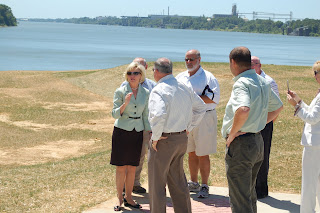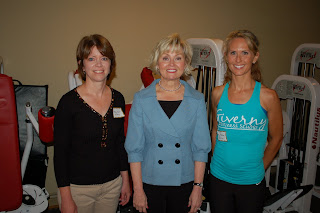TERRE HAUTE – Lt. Governor Becky Skillman congratulated Terre Haute Mayor Duke Bennett today on making Terre Haute the first community in Indiana to complete work under the Neighborhood Stabilization Program (NSP). Skillman visited Vigo County today as part of her Hoosier Crossroads Tour.
The city, which was awarded $1,850,000 of NSP funds in May 2009, has completed the construction, acquisition, and demolition of targeted properties in the Central Eastside Neighborhood. Now, 90 percent of the 28 new residential units are occupied.
“This program has made an impact on meeting the housing needs and preventing blight in cities across the state, and none has done it better and faster than Mayor Bennett and the Department of Redevelopment in Terre Haute,” Lt. Governor Becky Skillman said.
Thirty recipients shared more than $78 million of NSP funding. The City of Terre Haute, through its Department of Redevelopment leveraged an additional $1,415,000 in local grant resources and private financing to assist three non-profits with the construction of 28 new residential units (including 4 handicap accessible units). It also allowed the Department of Redevelopment to acquire 23 parcels for land banking to develop new residential units and demolish 36 abandoned/vacant residential structures.
“We’ve successfully filled abandoned properties, stemming the decline in neighboring property values and stabilizing a neighborhood struggling to recover from foreclosures and lack of development,” said Mayor Duke Bennett.
The City’s desired impact and outcome for the Central Eastside Neighborhood was to provide opportunities for low- to moderate-income citizens to live in decent, safe, affordable housing, and develop stronger partnerships with non-profit organizations.
Vigo County was Lt. Governor Skillman’s seventh stop on her Hoosier Crossroads Tour. For updates, visit www.beckyskillman.blogspot.com.
###






